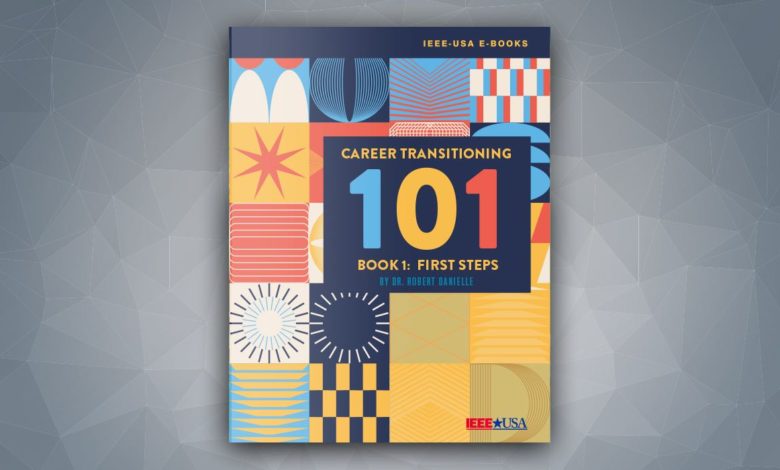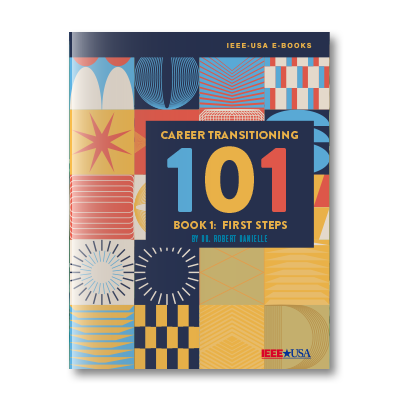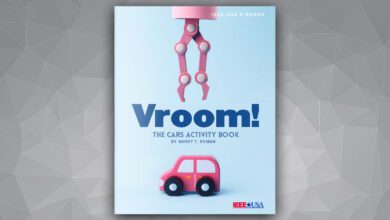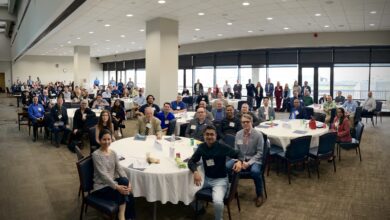
Is there a professional who hasn’t sensed it’s time to make a change, at some point in their career? Career transitioning is almost inevitable today — whether it begins with feelings of stagnation in a current role or company, changes in career goals or interests, or simply an unplanned change in employment.
In fact, according to Dr. Robert Danielle, an expert in professional/career development and career transitioning, the average person will change jobs 10 to 15 times during their career — the average being 12.
“A January 2018 report from the U.S. Bureau of Labor Statistics observed that many workers spend five years or less in every job,” he says, “meaning they devote more time and energy transitioning from one job to another; and because of the economic impact on the COVID-19 pandemic, those numbers could be even higher.”
A consultant whose work also includes leading large, successful change initiatives and improving individual and team performance, Danielle has just written the first volume in a timely, new IEEE-USA E-BOOK series, Career Transitioning 101 – Book 1: First Steps. The book is now available, at no charge to members; and for $2.99 to non-members, from the IEEE-USA Shop.
To help set readers on the right path, this first volume focuses on preliminary basic strategies. The author recommends them for the very early stages of the career transitioning process — even before writing a resume, or starting a job search.
“I share easy-to-use tactics to help provide a deeper understanding of personal strengths, gaps, opportunities and challenges — and how you can use these tools to launch a successful career transition,” Danielle says.
Danielle devotes most of this first volume to two critical strategies: first, finding and having a support system; and second, conducting a personal SWOT analysis.
He believes a good support system is vital. The author explains that obtaining a deeper understanding of yourself and what you have to offer starts with surrounding yourself with “people who not only believe in you, but will also tell you when you have something stuck between your teeth.”
More specifically, Danielle describes these people as individuals who can help you understand all the great things you can accomplish. More importantly, they are willing and able to tell you what else you must do to become even better in the future.
He adapts the second strategy, a personal SWOT analysis, from the standard strategic planning technique that organizations use to analyze Strengths, Weaknesses, Opportunities and Threats. For personal use, Danielle has fine-tuned them to Strengths, Areas for Improvement, Opportunities and Challenges.
“Even though it may not spell out SWOT, the concept is the same,” he says. “The goal is to create a visual representation of those things you do well, areas or gaps where you need to improve, any opportunities available to you, and challenges you need to overcome to achieve your goals.”
The author suggests that while various SWOT templates are available, experience has shown that writing each one of the sections on a piece of paper; and then completing the list in pencil, makes the person feel more deeply connected to what they write down.
“Strengths,” writes Danielle, “are the things that set you apart — that you do better than anyone else. It is not the time to be shy or worried about how things will appear. It is the time to start listing all those things that make you special.” He adds that this section also provides an ideal time to ask others about your strengths; people invested in your success will have no problems sharing what they have seen and learned from you.
The second area to analyze, Areas for Improvement, requires the right mindset. He notes this area requires a willingness to find and accept what you could be doing better — or need to learn to do. “Having a trusted support system in your life can really help you find the balance to put together a comprehensive and complete list of areas for improvement,” he says.
Recognizing and taking advantage of Opportunities — the third SWOT area — are, according to Danielle, “one of the best ways you can make the most significant and positive change happen in your life.” He describes them as “a roadmap without any guarantee you’ll get to your destination, or even enjoy the ride along the way. But miss out on one or more, and you may find yourself living in a world of what-ifs and regret.”
For example, Danielle says that some 70% of all job openings never make it to the public through job postings or job sites — but others in the organization usually know about them. It is the reason he emphasizes the importance of establishing, managing and getting to know your own personal network of strategic contacts.
Danielle also believes checking into your employer’s educational and additional training benefits. “Many organizations offer very comprehensive benefits in this area, but statistically not all employees are aware of or take advantage of them.”
The author defines the last of the four SWOT areas, Challenges, as those factors both in and outside one’s control that are in the way of achieving success. He provides many different examples, as well as strategies for overcoming them.
Finally, he concludes by recommending that those contemplating a career transition create a plan for themselves, and ask for help when they need it.
“Wash, rinse and repeat,” he writes. “This is an iterative process of continuous improvement … not just a one-and-done exercise. Review and take these steps throughout your professional career.”
Dr. Robert Danielle’s career spans professional/career development, leading large, successful change initiatives, and improving individual/team performance. He earned his Ed.D. in Higher Education and Organization Change, an M.S. in Information Systems Management, and a B.A. in Leadership — all as an adult learner — with both a family and demanding fulltime positions.
Helen Horwitz is an award-winning freelance writer who lives in Albuquerque. She was with IEEE from 1991 through 2011, the first nine as Staff Director, IEEE Corporate Communications.







